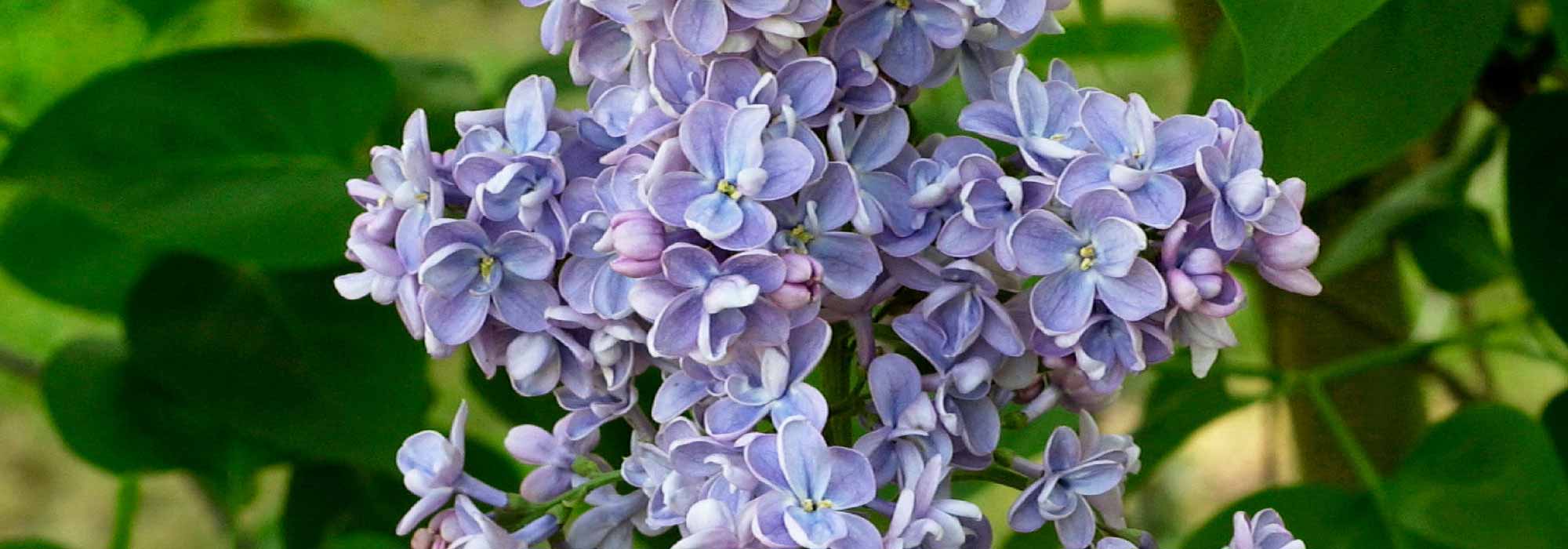
Lilac, Syringa: planting, pruning and care
Contents
Lilac in a nutshell
- Lilac is one of the most beautiful flowering bushes in spring: it blooms abundantly in opulent clusters of white, pink, purple, or violet lilac flowers
- Its delightfully fragrant flowering fills gardens and bouquets with a very floral scent, unmistakable among all
- It is a deciduous bush with a graceful habit, timeless, undeniably the king of spring
- Unpretentious and easy to grow, it possesses the charm and robustness of old plants
- It adds a touch of nostalgia to a flowering hedge, as a specimen, in a cluster of bushes, or even on a terrace
A word from our expert
Which garden does not waft the floral scents of Lilac in spring? Far from being outdated, lilac is even essential in our gardens!
Common Lilac or Syringa vulgaris and its hybrids, which are more compact and perpetual, have made a comeback in recent years. Unpretentious, the spring flowering of Lilac embodies the simple charm and freshness of old gardens.
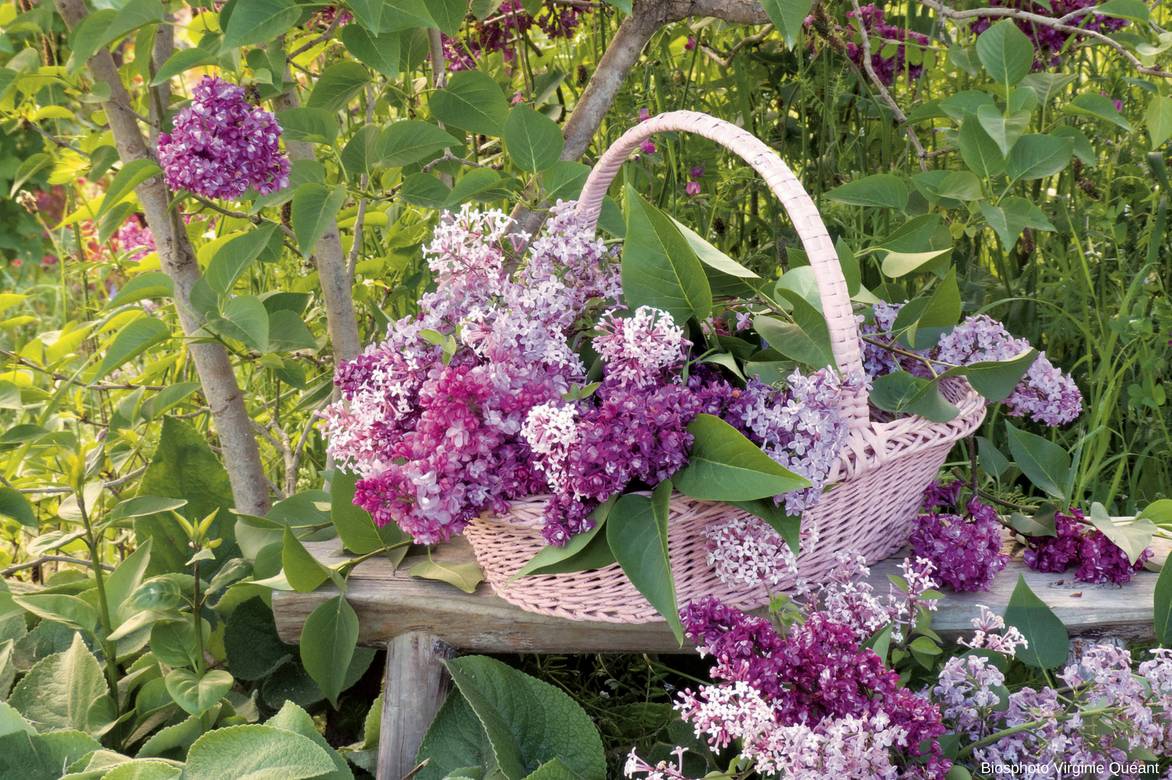
Basket of fragrant lilac
White lilac, Parsley-leaved lilac, or the must-have lilac with purple flowers (Syringa vulgaris ‘Capitaine Baltet’), this flowering bush, the king of spring, always adds a touch of nostalgia to a flowering hedge, as a specimen, in a shrub border, on a terrace, or in bouquets.
With a good hardiness (often well below -15°C), easy to grow and very vigorous, it combines the simplicity with the robustness of old plants. This iconic tree of May thrives in all naturalistic gardens as well as in city gardens.
How to plant a lilac, how to propagate by cuttings, how to perform pruning on a lilac, here are all our tips to successfully grow Lilac and ensure a beautiful flowering spring by finding the Lilac you are missing in our unique collection!
Description and Botany
Botanical data
- Latin name Syringa
- Family Oleaceae
- Common name Lilac
- Flowering from April to June
- Height 1 to 4 m
- Sun exposure Sun, partial shade
- Soil type All, well-drained
- Hardiness -15°C-30°C depending on varieties
Shrub or deciduous shrub from the olive family, the Lilac or Syringa is native to southeastern Europe and western Asia (from the Balkans to China and Japan) where it grows in undergrowth, bushes, and rocky hills.
The genus Syringa includes about twenty species, the most well-known and emblematic of our gardens being Syringa vulgaris, the common lilac which encompasses the largest number of varieties. The French botanist of the late 19th century, Victor Lemoine, significantly expanded this family by creating over 64 cultivars of Syringa vulgaris.
With hybrid varieties, there are now over 2,000 cultivars. The genus is not limited to the common lilac; it also includes small-leaved lilacs such as the Chinese Lilac (S. x chinensis) and Syringa microphylla, which are medium-sized with numerous small flowers, as well as late lilacs like the cultivars of Syringa x prestoniae, the Hyacinth-flowered Lilac (Syringa hyacinthiflora), a vigorous hybrid, or the Persian Lilac (Syringa (x) persica) with its curiously cut foliage resembling parsley leaves.
These species and varieties should not be confused with the mock orange (Philadelphus), which also has fragrant white flowers, nor with the crepe myrtle (Lagerstroemia), both belonging to botanically different families.
The lilac forms a vigorous shrub, dense with a upright habit in its youth, bushy and rounded or sometimes conical, flexible and airy, tending to spread over time, giving it a languid and delightfully nonchalant appearance.
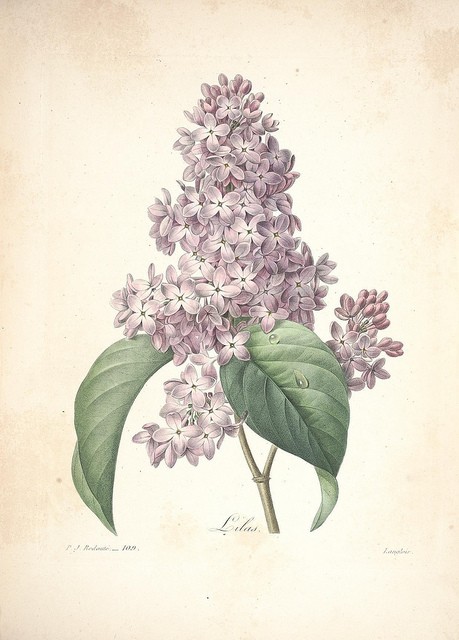
Syringa vulgaris – botanical illustration
Some Syringa microphylla (‘Red Pixie’) have an almost weeping habit with branches that are nearly horizontal, almost arched. Like the mock oranges, the lilac spontaneously forms a ramified bush composed of multiple slender and elongated stems each bearing numerous leaves, which gives the lilac a dense habit.
Anchored on multiple trunks, it grows vigorously and quite rapidly, its growth rate increasing with the years: it grows about 50 cm per year. The height varies from 2 to 7 m at maturity with a spread of 2 to 3 m, but it generally does not exceed 2 to 4 m in our gardens. The Chinese Lilacs and Syringa (x) persica have a particularly compact habit, reaching a maximum height of 1.80 m at maturity: barely wider than tall, they are valuable assets in small gardens.
Sometimes, with age, the bark may peel.
In spring, the delicate branches are adorned with a beautiful unpretentious foliage.
The foliage varies considerably from one species to another. The leaves are opposite and entire. The common lilac has deciduous leaves that are ovate, long-petiolate, recognizable by their heart-shaped form. The Syringa (x) persica or “Parsley-leaved Lilac” is distinguished from the common lilac by its curiously cut foliage into long, narrow lobes. Meanwhile, Syringa pinnatifolia, a Chinese botanical species, features pinnate leaves composed of 7 to 11 lanceolate leaflets.
Measuring 3 to 15 cm, they appear in spring in a light green to dark green colour. In the Hyacinth-flowered Lilac, they take on a beautiful autumn colouration, turning golden and bronze. They are mostly satin-like but sometimes have a velvety underside.
In spring, spikes of flowers overwhelm this beautiful refreshing green foliage, covering the entire plant with dense and fragrant bouquets. Its abundant charmingly simple spring flowering has perfumed gardens and bouquets for over a century. Lilac flowers are among the first to reward us with their authentic very floral and refined lilac scent.
From April to May, sometimes until June, and then in September depending on the climate and species, they appear in floral buds, tightly packed together. They gradually bloom into very small tubular flowers, single, double, or semi-double, eventually forming beautiful clusters gathered in pyramid or conical panicles, more or less large and scattered, also called thyrses. Grouped in pairs at the tips of the previous year’s branches, these inflorescences measure 4 to 30 cm in length.
 Several colours: Syringa vulgaris ‘Sensation’, Syringa vulgaris ‘Primrose’, Syringa meyeri ‘Palibin’, Syringa patula ‘Miss Kim’, Syringa persica ‘Laciniata’.
Several colours: Syringa vulgaris ‘Sensation’, Syringa vulgaris ‘Primrose’, Syringa meyeri ‘Palibin’, Syringa patula ‘Miss Kim’, Syringa persica ‘Laciniata’.
The flowers of the Persian Lilac appear in more scattered thyrses. Long and slender, they consist of 4 lobes that are narrower and more curled than those of the common lilac.
If in Persian, “lilac” means “purple”, its original colour, the florets come in varied colours from pure white, pale lilac, pure pink to pink-violet, light blue-lilac or even rose-red, purplish burgundy to wine-red. Some varieties (Lilac ‘Sensation’) exhibit a bicolour flowering that is relatively rare among lilacs.
The flowering lasts 15 days to 1 month depending on the regions, and some hybrids (lilacs from the Bloomerang® series) have a well-repeating flowering, lasting until the first frosts.
Highly melliferous, it attracts many bees and butterflies.
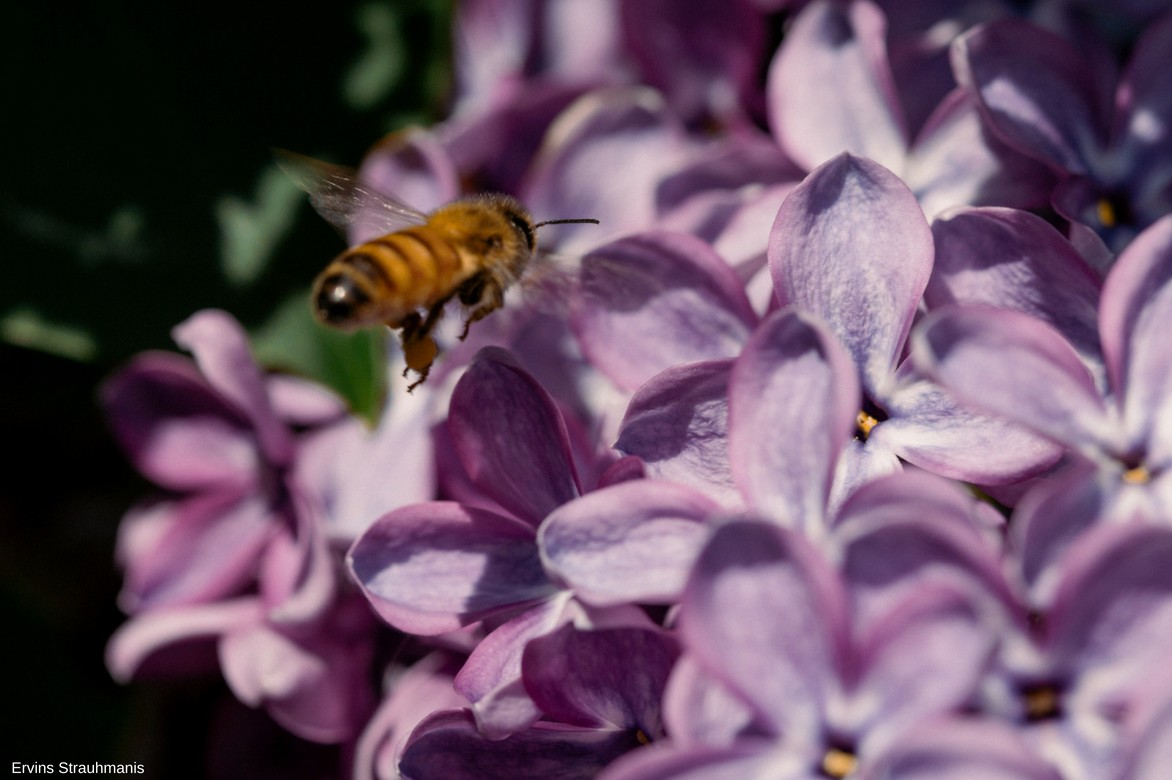 Lilac flowers are highly melliferous.
Lilac flowers are highly melliferous.
The deliciously fragrant clusters make for fresh spring bouquets but are ephemeral; in a vase, they tend to wilt very quickly within two to three days.
Perfectly hardy (-25°C), the lilac adapts to all our climates and is very easy to grow in sun or partial shade in ordinary well-drained soil, even very calcareous. This undemanding shrub finds its place in all gardens, often used as a specimen plant, in shrub borders or in groves, left in its natural form, in large flowering hedges or even on a terrace or balcony, planted in a large container. Very suckering, the lilac eventually spreads to form a true little grove over the years. Long-lived, it has a lifespan of 20 to 40 years.
Main species and varieties
Il existe une twenty species of lilac but it is the common lilac or Syringa vulgaris that is the most widespread in our gardens. This species declinates the largest number of varieties with varied colours ranging from pure white to light blue-mauve, passing through light pink and violet edged with white.
The genus currently includes over 2,000 cultivars and hybrids. We distinguish between lilacs with simple flowers and those with double flowers, the lilacs with small leaves such as the Chinese Lilac (S. x chinensis) and Syringa microphylla, and the late or perpetual lilacs. Today, there are dwarf lilacs well-suited for small gardens as well as for pot cultivation. Some hybrids are exceptional for their fragrance, particularly those from the Bloomerang series which also offer a perpetual flowering. All are very hardy flowering shrubs and remarkably easy to care for.
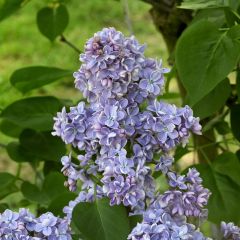
Syringa vulgaris Capitaine Baltet - Common Lilac
- Flowering time May, June
- Height at maturity 3,25 m
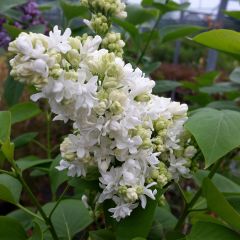
Syringa vulgaris Madame Lemoine - Common Lilac
- Flowering time June
- Height at maturity 4 m
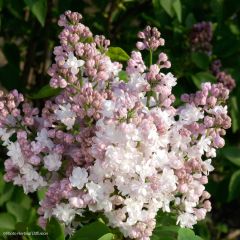
Syringa vulgaris Belle de Moscou - Common Lilac
- Flowering time June, July
- Height at maturity 3,50 m
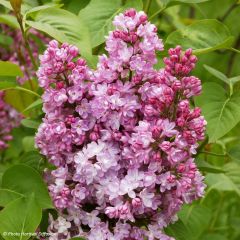
Syringa vulgaris Belle de Nancy - Common Lilac
- Flowering time May, June
- Height at maturity 4 m
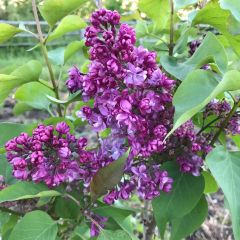
Syringa vulgaris Prince Wolkonsky - Common Lilac
- Flowering time May, June
- Height at maturity 7 m
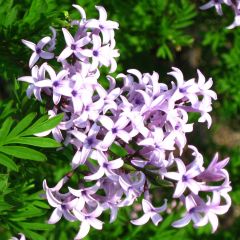
Syringa persica var. laciniata - Lilac
- Flowering time May to July
- Height at maturity 1,50 m
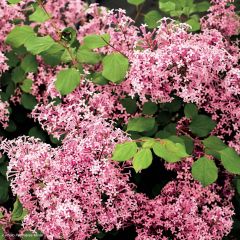
Syringa microphylla 'Red Pixie'
- Flowering time May to July
- Height at maturity 1,50 m
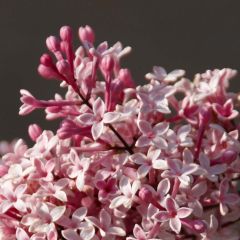
Syringa microphylla Superba - Lilac
- Flowering time May to November
- Height at maturity 1,50 m
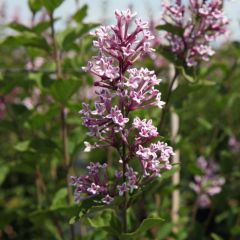
Syringa velutina Josée - Lilac
- Flowering time May to November
- Height at maturity 2 m
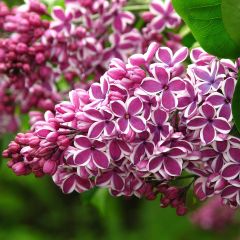
Syringa vulgaris Sensation - Common Lilac
- Flowering time May, June
- Height at maturity 4 m
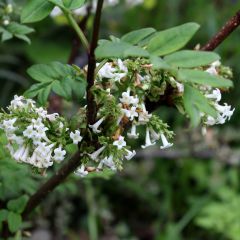
Syringa pinnatifolia - Lilac
- Flowering time May to July
- Height at maturity 3 m

Syringa hybride Bloomerang Dark Purple - Lilac
- Flowering time June to November
- Height at maturity 1,60 m
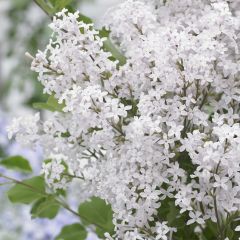
Syringa meyeri Flowerfesta White - Lilac
- Flowering time May to November
- Height at maturity 1,25 m
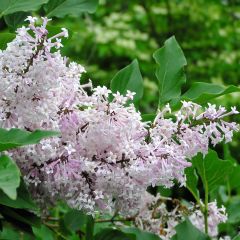
Syringa patula Miss Kim - Lilac
- Flowering time June, July
- Height at maturity 1,75 m
Discover other Syringa - Lilac
View all →Available in 2 sizes
Available in 0 sizes
Available in 0 sizes
Available in 1 sizes
Available in 1 sizes
Available in 2 sizes
Available in 0 sizes
Available in 1 sizes
Available in 0 sizes
Available in 1 sizes
Planting Lilac
Where to plant?
Very hardy (down to -29°C) once established, Lilac withstands wind as well as severe frosts in winter and will adapt well to summer drought. This bush does not fear extreme cold, even appreciating it; a rather harsh winter will encourage its flowering. This beautiful hardiness ensures a long life in all regions. It is an essential shrub north of the Loire that also tolerates the Mediterranean climate in partial shade while keeping the soil cool and moist.
Lilac only flowers well in the sun where it produces a maximum of flowers but will tolerate a partially shaded exposure, especially in the southern regions of France. Provide it with a sunny spot of at least 6 hours a day. Shade significantly reduces its flowering.
While it accommodates any ordinary soil, lilac will perform best in fresh, well-drained, deep, fairly rich soil, even tolerating calcareous soil. It is easy to grow in draining soil as it fears excess moisture and locations where water can stagnate in winter.
With its fairly versatile nature, lilac finds its place in all natural gardens, even in small spaces, forming lovely focal points. Its uses are numerous. Its very suckering nature allows it to quickly form very floriferous clumps: give it enough space to develop.
It can be planted at the edge of a grove, in front of taller trees, in groups or as a solitary.
It also flowers large borders, backgrounds of flower beds, large free hedges, mixed with other shrubs to alternate flowering, with different varieties of lilac, Forsythias, and buddleias. Be sure to surround it well as once its flowering is over, it quietly falls back into anonymity, becoming unremarkable. Plant it near the house or a thoroughfare to fully enjoy its enchanting fragrance.
When to plant?
Plant the Lilac in autumn, from September to November to encourage rooting before winter or in spring, from March to May, when all risk of frost has passed and provided you increase watering.
How to plant?
With a suckering character, the Lilac needs enough space to develop. Depending on the varieties, leave 1 to 3 metres between each lilac plant or neighbouring plants.
To create a hedge: space each plant 1 to 2 m apart. A rich and well-drained soil, well worked with compost and a few handfuls of organic fertiliser (such as seaweed) will promote the recovery and development of your lilac.
- Dig a hole twice as wide as the root ball
- Spread a layer of clay balls or gravel 30 cm thick at the bottom of the hole
- Throw a handful of compost or potting soil into the hole
- Place your lilac so that the root ball is level with the soil
- Fill in and lightly compact at the base of the shrub
- Mulch with a good layer of bark mulch or pine needles to retain some moisture in the soil during summer
- Form a basin around the base and water generously for the first few weeks to encourage recovery
How to plant a lilac in a pot?
The dwarf lilacs (Syringa meyeri ‘Flowerfesta White’, Syringa patula, Syringa microphylla, Syringa Bloomerang ‘Dark Purple’) make a sensation in a large pot on the terrace where they will spread their delicate floral fragrance in spring.
- Choose a container large enough for the shrub to develop well (minimum 60 cm in height)
- Ensure perfect drainage with clay balls or pumice
- Install your lilac in good potting soil
- Choose a sunny or partially shaded location in southern regions
- Water regularly twice a week in summer
- Repot every two years into a larger container
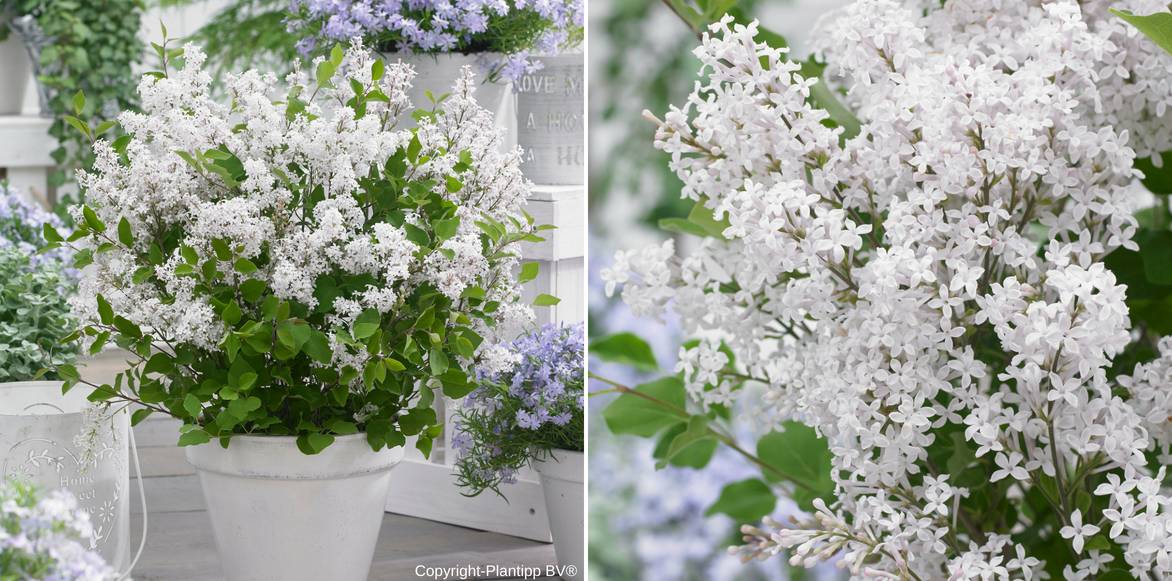
The Syringa meyeri Flowerfesta ‘White’ can be grown in a pot
Read also
How to take lilac cuttings?Care and pruning
Hardy often down to -15°C, drought-resistant as well as resistant to air pollution, the Lilac is incredibly robust. Once well established, it requires very little maintenance to flower abundantly year after year and grows on its own. It is an essential companion for gardens without gardeners.
Apart from the first two summers following planting, when you will monitor watering to encourage rooting, especially in cases of prolonged drought, it is unnecessary to water the lilac in the ground. Water at least twice a month.
Mulch in summer in dry climates to maintain some moisture at its base.
Add compost or a bag of potting soil in spring by lightly scratching it into the soil at the base of the bush to promote growth, although this is not essential.
Remove faded flowers immediately after flowering before they set seed to encourage the appearance of new ones and prevent the bush from exhausting itself unnecessarily.
Regularly remove suckers at the base to prevent overcrowding.
How to properly prune lilac
Maintenance pruning is recommended each year to maintain a balanced habit and limit its spreading. It is better not to prune the lilac too severely but to prefer a light annual refresh that will also promote flowering.
→ To learn everything about lilac pruning, discover our advice sheet: Lilac: how to prune it properly?
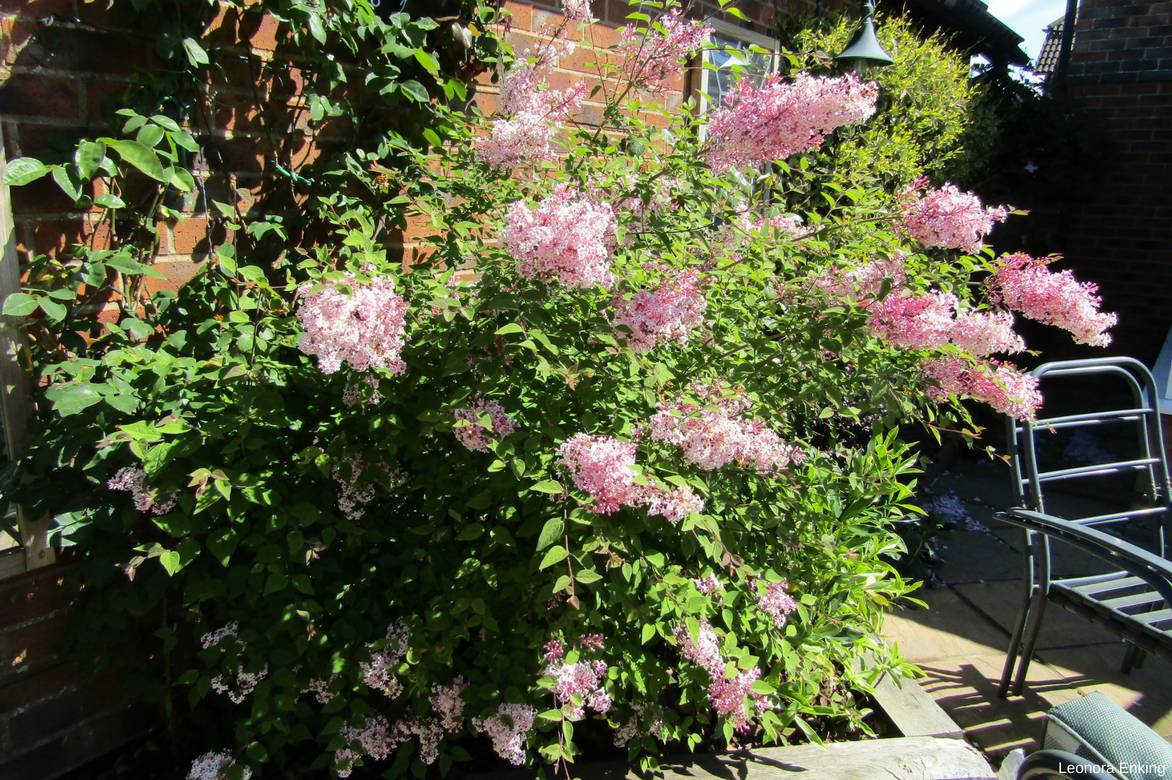
Syringa meyeri ‘Palibin’
Pests and potential diseases
Lilac is a very resilient bush if properly planted. However, it can fall victim to certain pests and diseases.
It can frequently suffer from powdery mildew, which leaves an unsightly white fluff but is not very concerning for the bush, especially on the leaves at the end of summer when the weather is warm and humid. Remove the affected branches with disinfected pruning shears and spray a sulphur-based fungicidal solution, nettle manure, or treat with Bordeaux mixture.
Recognisable by the cottony masses they leave on the leaves, mealybugs can attack lilac in summer. They can be eliminated with a cotton ball soaked in 90°C alcohol, followed by sprays of rapeseed oil to be repeated two or three times at 15-day intervals.
Weevils, small beetles that “puncture” the edges of the leaves, quite frequently attack lilac. These nibbling insects come out at night: spot them and burn them. In the morning, spray decoctions of tansy or a solution of nematodes.
In some regions, it can be affected by bacterial blight, a formidable disease that can kill the bush within weeks. The bacterium spreads rapidly in warm and humid weather, between 25 and 30°C. The bush appears burnt by fire. There is no curative treatment, so it is essential to prevent the disease and stop its spread. Cut and burn all affected parts and spray in prevention in spring with Bordeaux mixture or a horsetail decoction. If the entire bush is affected, cut it down and burn it.
Finally, in waterlogged soil, lilac is very sensitive to cryptogamic diseases such as root rot, which leads to rotting of the roots, with the bark peeling off, also revealing white patches. As no treatment is effective, ensure perfect drainage from the moment of planting.
→ Learn more about the diseases and pests of lilac in our advice sheet.
Multiplication
Taking Cuttings from Lilac
Lilac can be propagated by herbaceous cuttings after flowering in June-July or semi-woody cuttings (that is, those that transition from softwood to hardwood) in August-September. The process is a bit delicate, and taking suckers remains the easiest method.
→ To learn everything about lilac propagation by cuttings, check out our advice sheet: How to take a lilac cutting?
By Air Layering
The lilac easily produces suckers, and air layering in spring remains a simple method to multiply it while controlling its spread.
- Dig a furrow in the soil near the bush
- Choose a low stem that is easy to bend to the ground
- Remove the leaves from the lower part of the stem
- Bury it about twenty centimetres deep
- Raise the leafy end of the branch and stake this aerial part
- Fill in the furrow and secure the layer with a hook or stone
- The buds will root in 1 year: the following spring
- Cut the stem at the point where it enters the soil to wean the layer
- Transplant immediately into the ground and water
By Taking Suckers
The lilac naturally produces suckers, which are new shoots from its stump; this method of propagation is the simplest. Operate in late autumn on plants at least 5 years old from well-developed shoots. However, they will take many years to flower!
- Using a spade, separate the rooted suckers around the stump
- Cut the root as close to the stump as possible
- Transplant immediately into the garden in well-drained, well-composted soil, taking care to water well
Use and combine in the garden
Emblematic of old gardens, whether in town or countryside, with its fragrant flowering that combines charm and simplicity, the Lilac is undoubtedly the king of spring scenes. Having fallen into oblivion in the 1960s and 1970s, with its nonchalant appearance, this timeless bush is making a strong comeback in our gardens. It brings a delightfully old-fashioned touch to the garden, whether in a large country border, a flowering hedge, as a specimen, in neglected corners, in romantic pots placed on the terrace or balcony, as well as in bouquets.
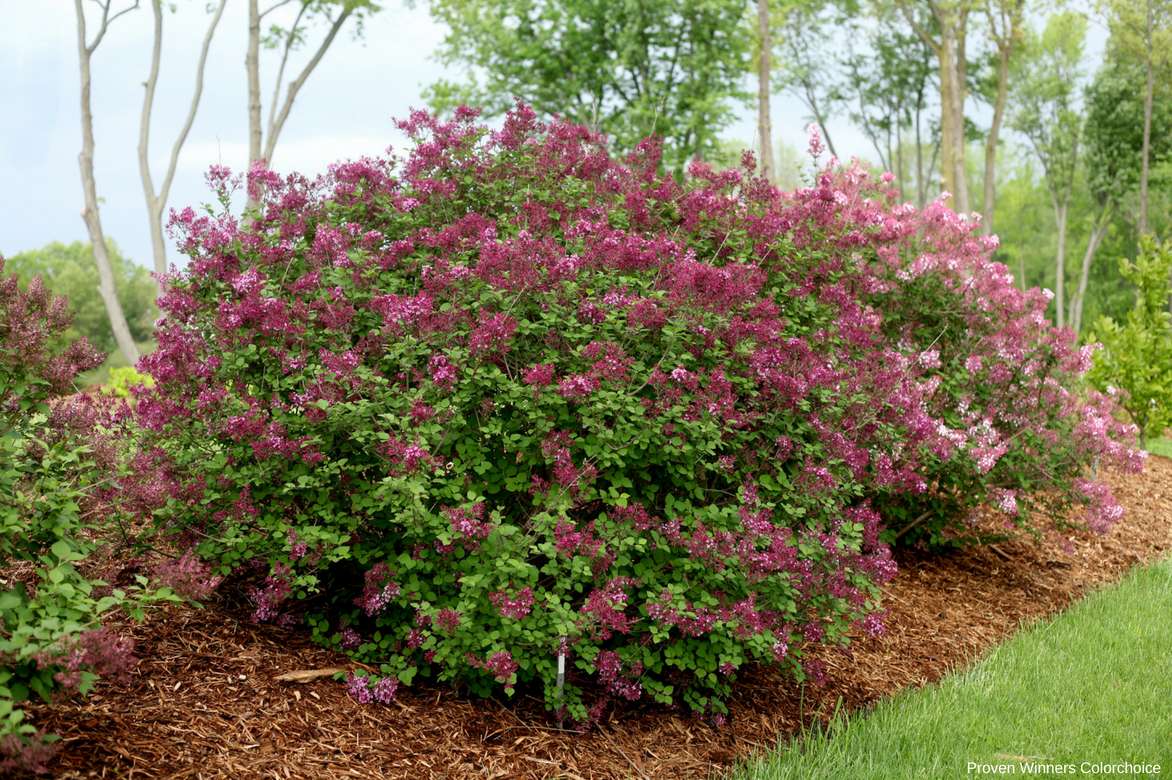
Syringa Bloomerang ‘Dark Purple’ as a specimen
All lilacs are enchanting with their blue-mauve, pink, or white flowers. Compact and resistant to pollution, it is a good bush for town gardens and small spaces. It is essential in a white garden and in a romantic garden.
In a large flowering hedge, it mingles with other flowering shrubs, blooming after the forsythias, at the same time as the amelanchiers, and before the buddleias. It will be perfect in the company of Japanese andromedas, pink or white flowering spireas, Chinese almond, and Japanese quinces.
Play with different cultivars of lilacs to create a truly colourful thicket.
In a large spring tableau, it pairs ideally with ceanothus, rhododendrons, Judas trees or Cercis.

An example of association in a spring hedge: Syringa vulgaris ‘Belle de Nancy’, Amelanchier lamarckii, Cercis siliquastrum, Spirea japonica ‘Snowmound’
The powdery blue, pale pink, or white flowers of lilacs will unfold in a delicate cloud next to the compact inflorescences and broad foliage of hydrangeas, a magnolia, or a calycanthus.
At the back of a naturalistic border, it will neighbour with grasses like pennisetum, whose supple habit and light inflorescences will contrast with its dense foliage and disorderly silhouette. Conversely, the loose habit of lilac with its flower-laden panicles offers a contrast of form with the strictness of conifers such as yews.
Lilac makes a magnificent backdrop for early bush roses.
You can drape large lilacs of a pink or white cultivar of Clematis montana. It can also be used as a specimen, surrounded by a bed of ground-cover roses, peonies, or a creeping ceanothus.
Cultivars in pastel shades are charming in a naturalistic setting surrounded by campanulas and poet’s narcissus.
Lilacs of a rich purple-plum colour pair well with the purple foliage of Prunus, barberries, or paler lilacs.
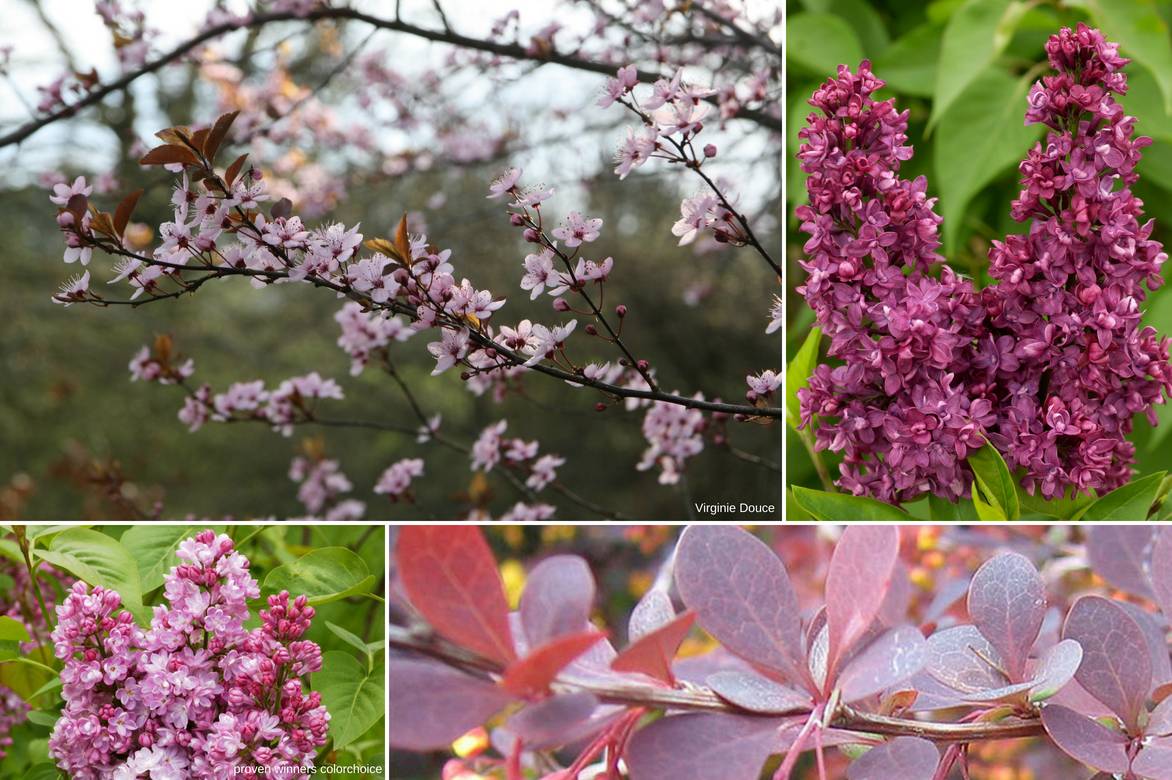
An idea for association: Prunus pissardii ‘Nigra’, Syringa vulgaris ‘Charles Joly’, Berberis ottawensis ‘Superba’, Syringa Bloomerang ‘Pink Perfume’
Yellow flowering plants that bloom at the same time as lilacs create a yellow/blue contrast, magnificent with their profusion of large mauve or violet flowers. They offer a beautiful complement especially with shrubs with green-yellow foliage like mock oranges or yellow flowering plants like broom, cytisus, and with early flowering yellow perennials like spurge, primroses, and iris germanica.
Late lilacs that offer a remontant flowering in autumn will accompany the remontant roses, large asters, and gaura.
Useful resources
- Discover which companion plants are suitable for lilac and get inspired by our ideas for combinations
- Compose a poetic and romantic bed ofpink/purple around the lilac!
- Lilac has its place in a timeless garden, let yourself be guided!
- Pink, purple or white, choose the lilac you are missing from our unique collection of Syringas!
- Advice sheet: White Lilac: 5 varieties with white flowers to adopt in the garden
- Advice sheet: Purple Lilac: the best varieties
- Advice sheet: 7 Lilacs with pink flowers to adopt in the garden
- Advice sheet: The best dwarf lilacs for pots or small gardens
- Advice sheet: Lilac – Syringa: the most fragrant varieties
- Tutorial: Fragrant Lilacs: how to force flowering for enchanting bouquets?
- Advice sheet: Choosing a lilac to plant in your garden: our buying guide
- Subscribe!
- Contents
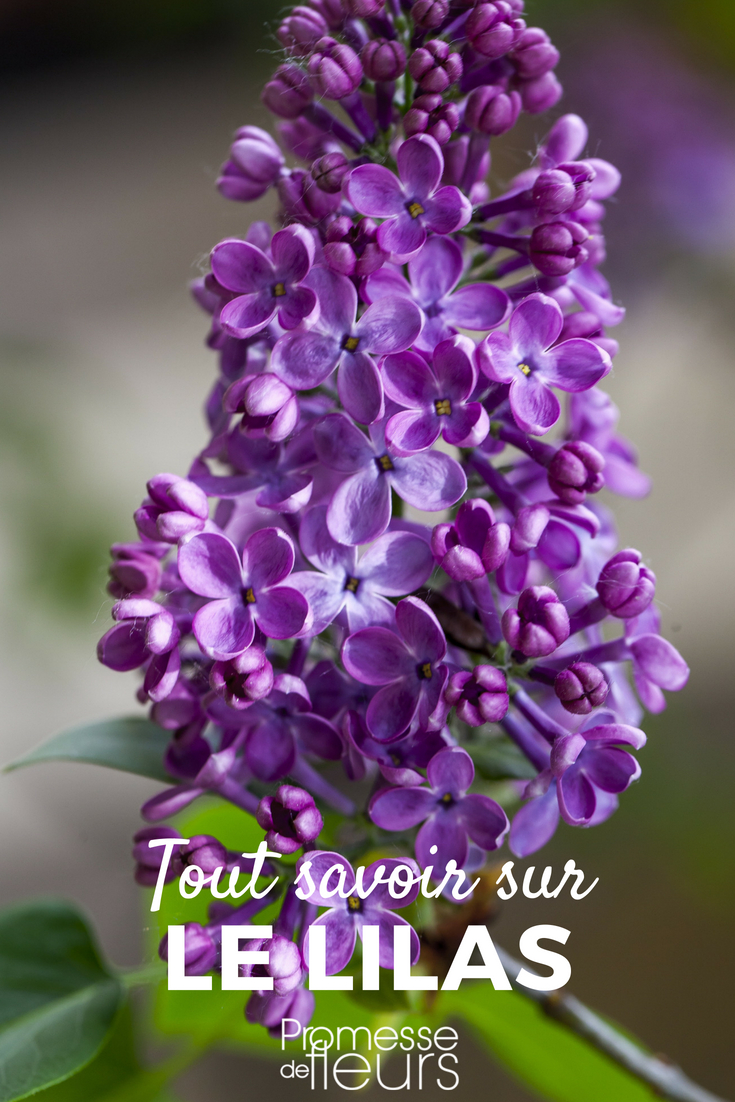































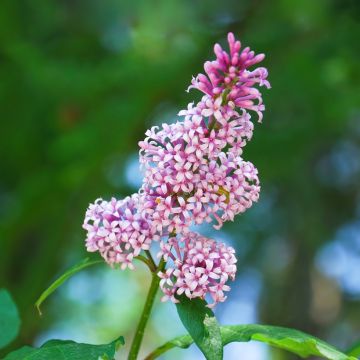

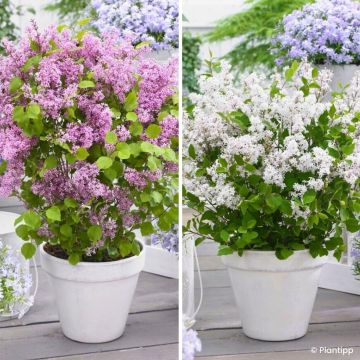


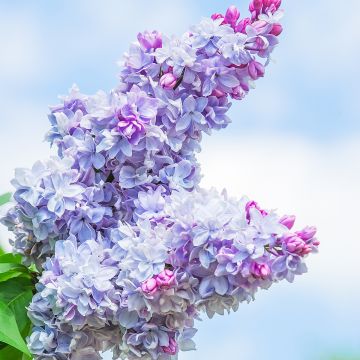
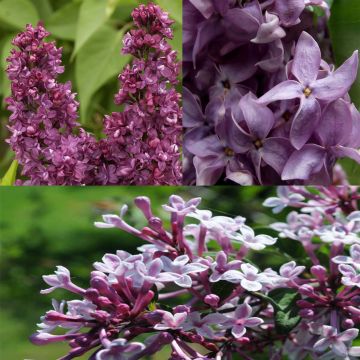
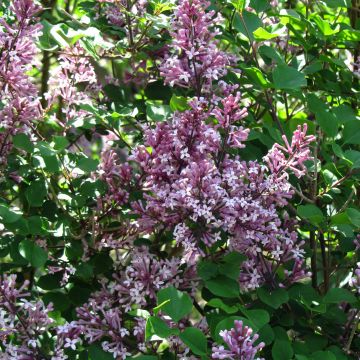
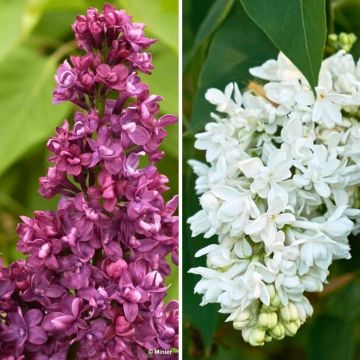

Comments